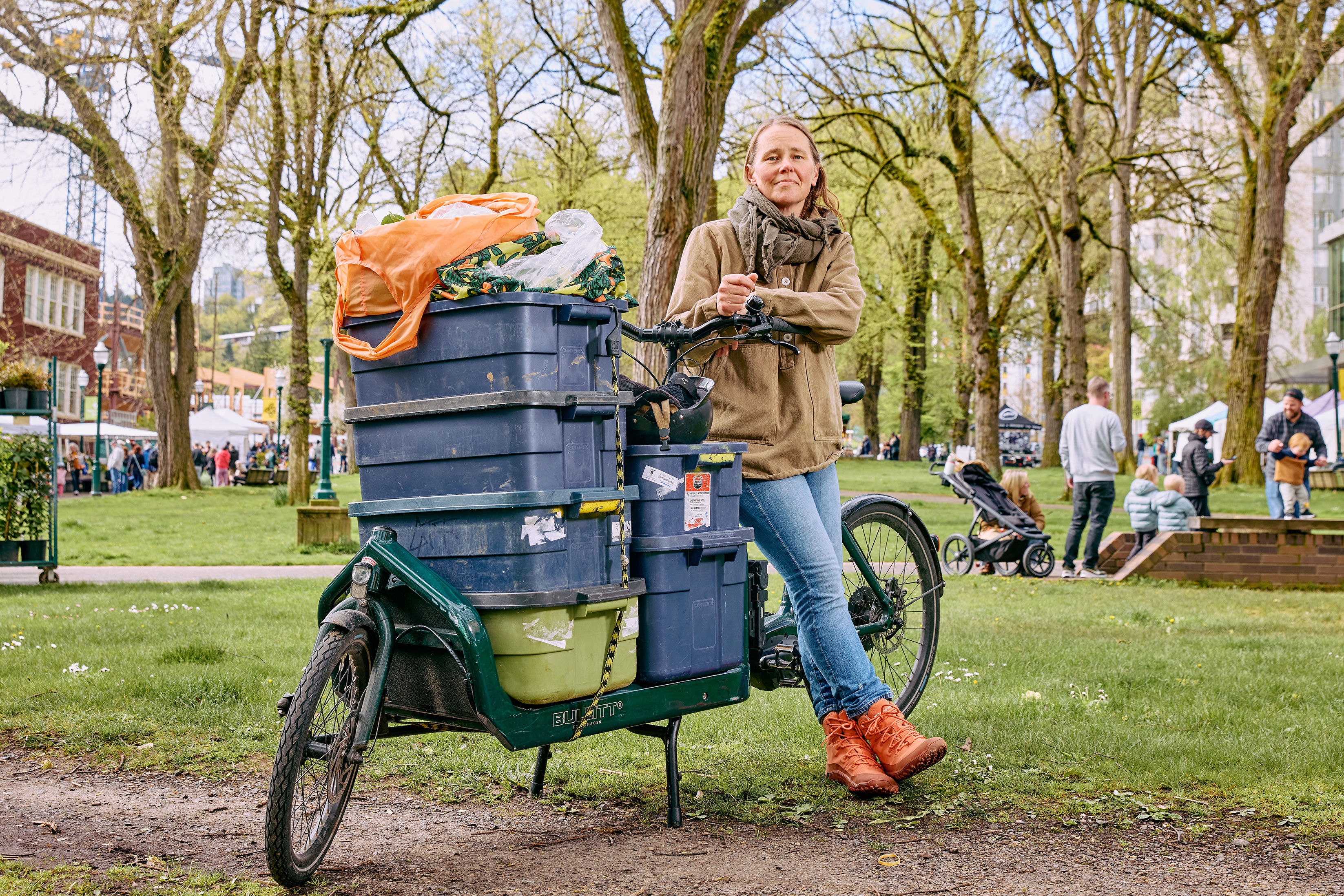The Definitive Guide to Buying and Cooking Winter Squash
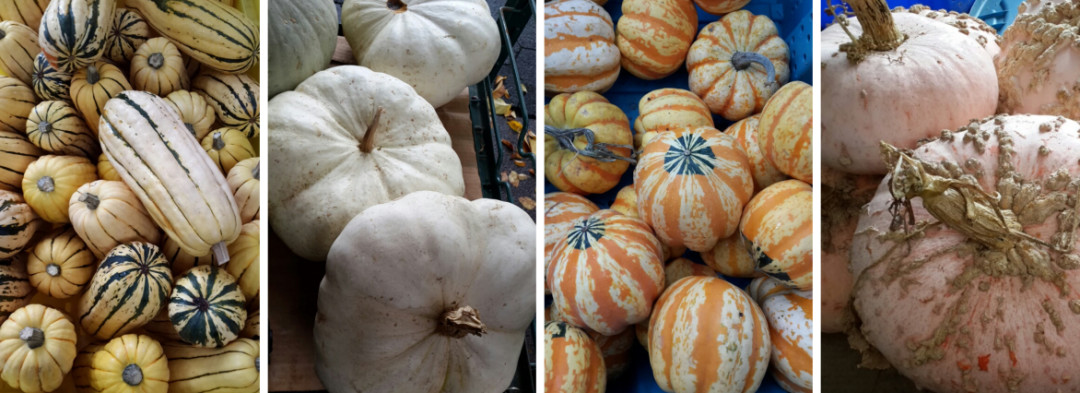
From roasting and baking to mashing and pureeing, winter squash is one of the most versatile ingredients—and it's equally comforting in both sweet and savory dishes. We talked to Chris Hertel of Sun Gold Farm in Forest Grove, a regular at many area farmers markets, to get a detailed tour of the farm's extensive variety of winter squash available through fall and winter. Which are your favorites?
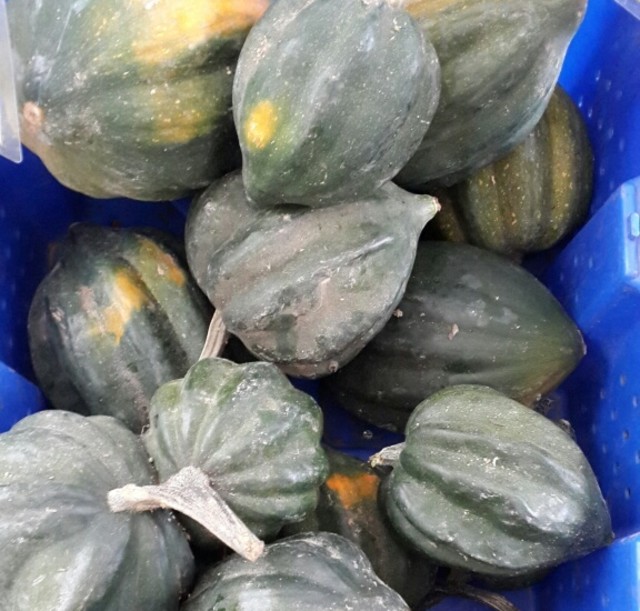
Black Acorn: One of the easiest to grow and most plentiful, the Black Acorn squash is commonly known and easy to prepare. But according to Hertel, it’s not the best variety to go for if it’s your first time sampling squash. “Usually, people will turn their nose up to squash in general because this variety was all they’ve had and it’s what they grew up eating,” he explains.
How it looks: Round with groves, dark green in color, watery and stringy yellow flesh
How it tastes: Nutty, mild flavor
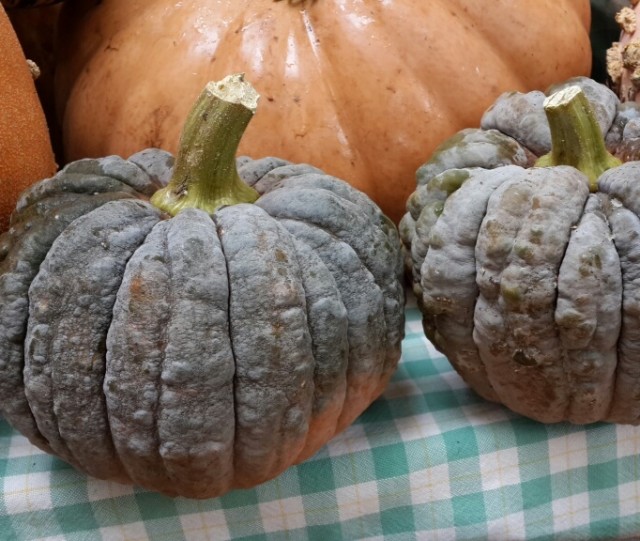
Black Futsu: A rare and unique variety that is native to Japan, the Black Futsu comes in an interesting hue of charcoal, brown, greenish-blue, and sometimes purple.
How it looks: Flattened, round with heavy ribbing and wart-like exterior, skin is usually dark green or black which turns dark brown when ripe, golden flesh with yellow rind
How it tastes: Rich, hazelnut flavor
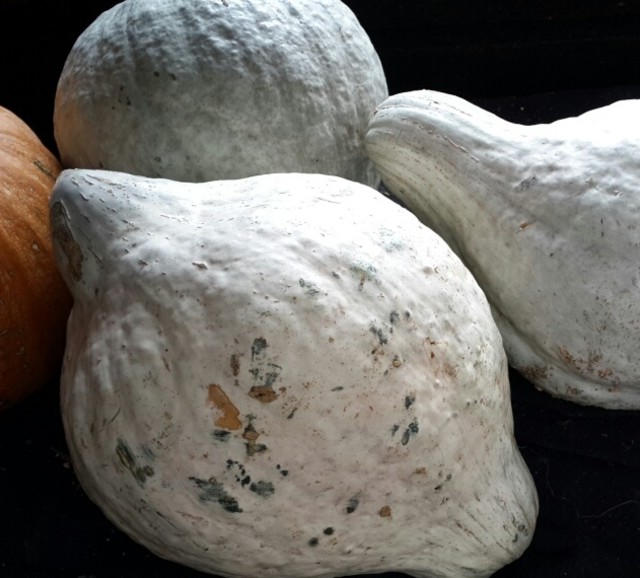
Blue Hubbard: A popular New England squash with thick rind, the Blue Hubbard can be stored in the basement or cellar for three to four months. “You can gradually take chunks off to roast along with chicken or turkey every now and then. It’s not as dry as others and is full of flavor. You can carve it, or take the flesh out and use it as a bowl,” Hertel says.
How it looks: Huge, unusual, sometimes teardrop-shaped. Hard, inedible dusky blue-gray shell with a deep orange, fine-grained flesh.
How it tastes: Sweet and nutty flavor like a sweet potato, dense and starchy texture
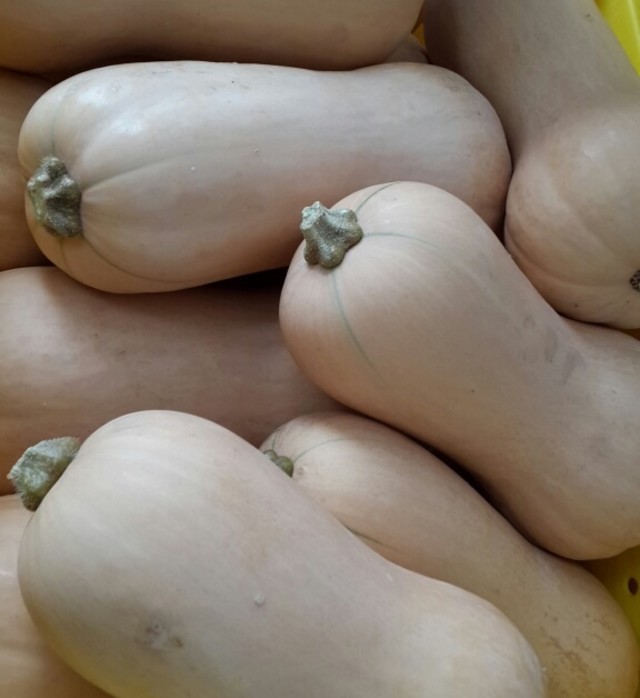
Butternut: This classic variety can be used in various ways, from roasting and toasting to baking and grilling. Butternut squash has high amounts of antioxidants and fiber, making it an excellent low-calorie substitute for potato. Like Hertel says, “Everybody loves butternut squash for a reason.” Find out how to make John Gorham's harissa-stewed butternut squash soup here.
How it looks: Bulbous shape. Yellow skin that turns deep orange when ripe, orange-yellow fleshy pulp. Small seed cavity.
How it tastes: Nutty and sweet, offers a creamy, consistent flavor. Unlike many varieties, the seeds and skin are edible raw.
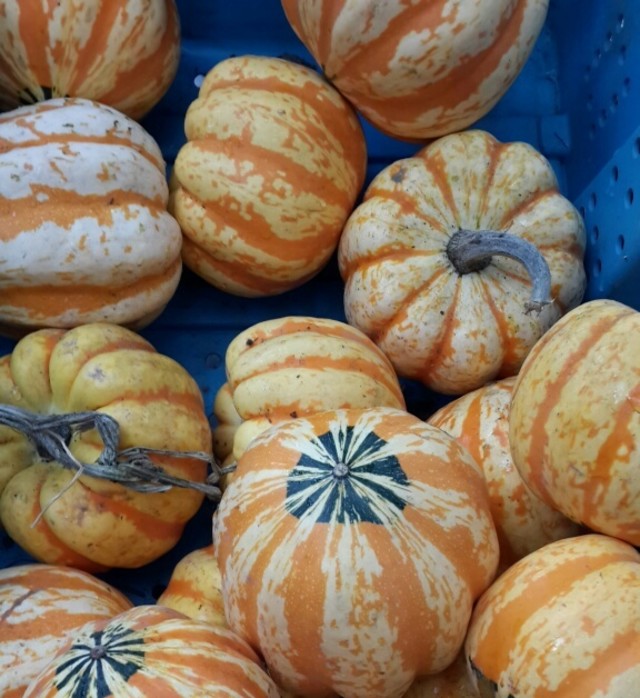
Carnival: A hybrid of the Acorn and Sweet Dumpling variety, the Carnival’s flesh is similar to sweet potato and butternut squash, making it a perfect substitute for recipes that call for butternut squash. Its multihued shell is ideal for decorative purposes, and its deep cavity makes for a great stuffing vessel with vegetables or meat.
How it looks: Deeply-indented top with striped, multicolored patterns of orange and green on the outside. Pale orange, somewhat stringy flesh with a large seed cavity.
How it tastes: Dry, firm texture. Mildly sweet, buttery and nutty flavor that is enhanced once cooked.
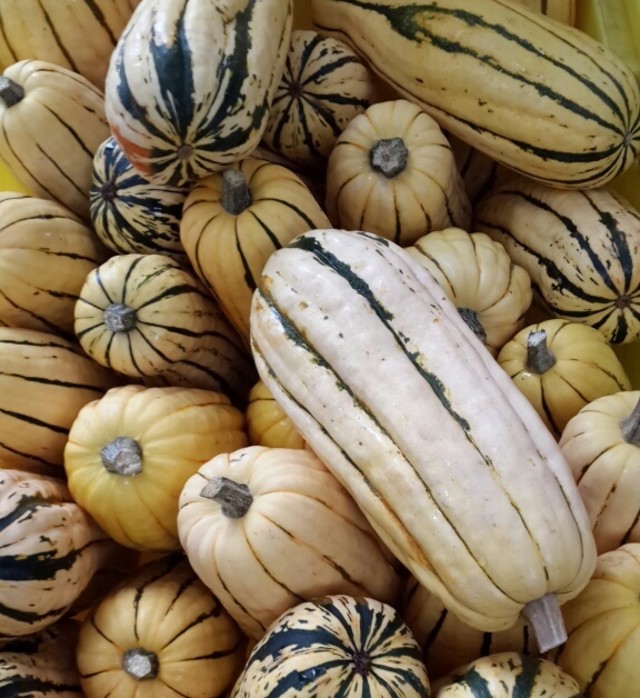
Delicata: Also known as the sweet potato squash, the Delicata has a thin outer skin that is edible—simply roasting it for 20 minutes makes it a quick and easy side dish. Another way to perk the flavors of this sweet variety: “I usually add onion and bacon in,” Hertel says. “Roasting it will caramelize the edges, so it’s sweet and savory at the same time.” Its thin skin also indicates that it does not store well over a long period.
How it looks: Thin oblong shape, pale yellow skin with green striped ridges, yellow flesh.
How it tastes: Sweet, nutty flavor similar to corn and sweet potato, with a creamy, smooth texture.
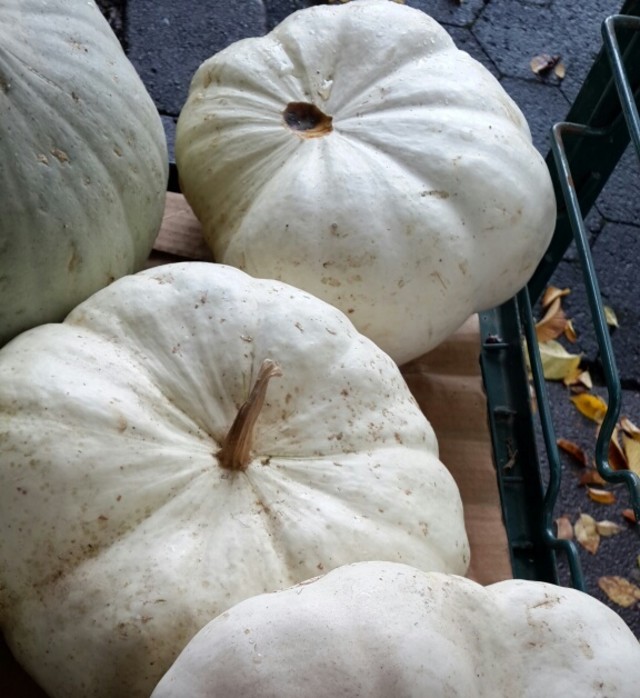
Flat White Boer Ford: Named after the original Dutch settlers in South Africa, this heirloom squash is often used for decorative purposes, thanks to its unusual shape and color. Its brittle shell makes it easier to open than other squash varieties, plus it has an incredibly long storage period.
How it looks: Flat and squat shape. Brittle, creamy white colored outer shell with deep orange flesh. The white outer skin does not change or yellow over time.
How it tastes: Sweet, very firm and dry, dense texture
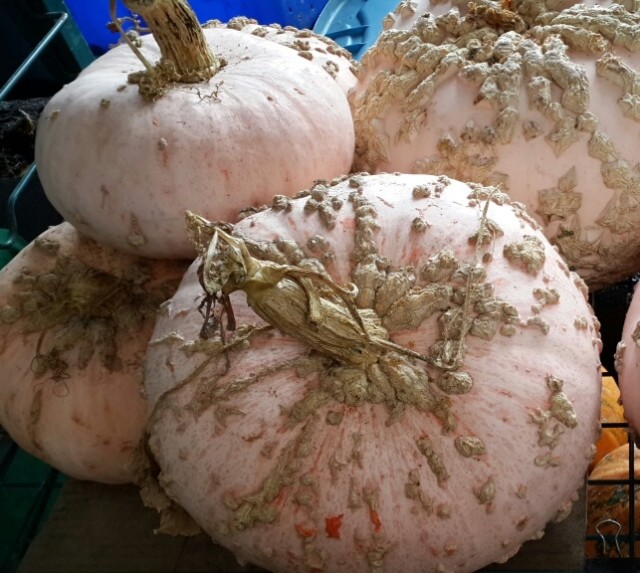
Galeux d’Eysines: This unique French heirloom is covered in warts that are formed due to the sugars that break through and react with the skin. But fret not if it is covered almost completely with barnacles—the more there are, the sweeter it is. “Despite the elegant sounding name, Galeux translates to ‘mangy’, basically means that it’s a mangy squash from the French town of Eysines,” Hertel says. “But it’s one of the best tasting squash that’s great for recipes incorporating hubbard-type squash.”
How it looks: Can grow up to 20 lbs, salmon-pink colored skin with light brown, uneven warts that look like peanut shells, thick and bright orange flesh
How it tastes: Sweet, smooth and firm texture
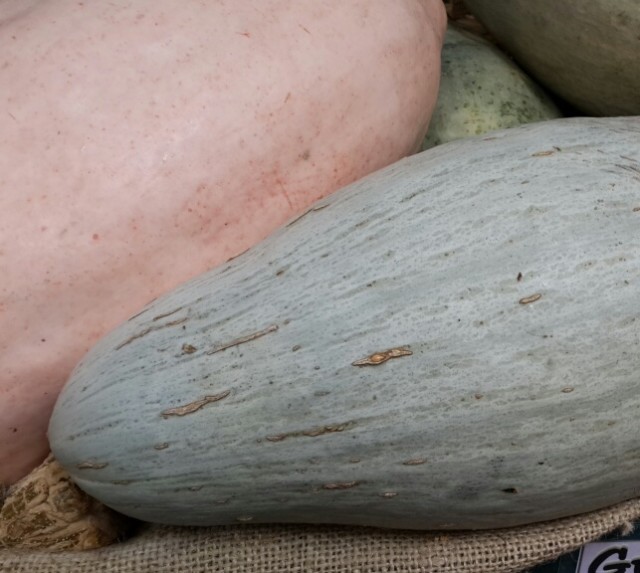
Guatemalan Pink Banana and Blue Banana: Banana squash are one of the top tier among winter squash varieties as they are rare to find (Blue Banana) and can also grow up to a jumbo size (Pink Banana). “They make great baby food because of their soft and moist texture,” Hertel says. “I’ve made beer using the pink variety before, and it was a hit.”
How it looks: Both are cylindrical in shape. The blue variety has a slate-blue outer skin, with golden yellow flesh. The pink variety can weigh up to 50 lbs and has a dull deep pink skin with yellow-orange flesh.
How it tastes: Blue Banana squash has a sweet, firm and thick texture. Pink Banana squash is not stringy, mildly dry, and very sweet.
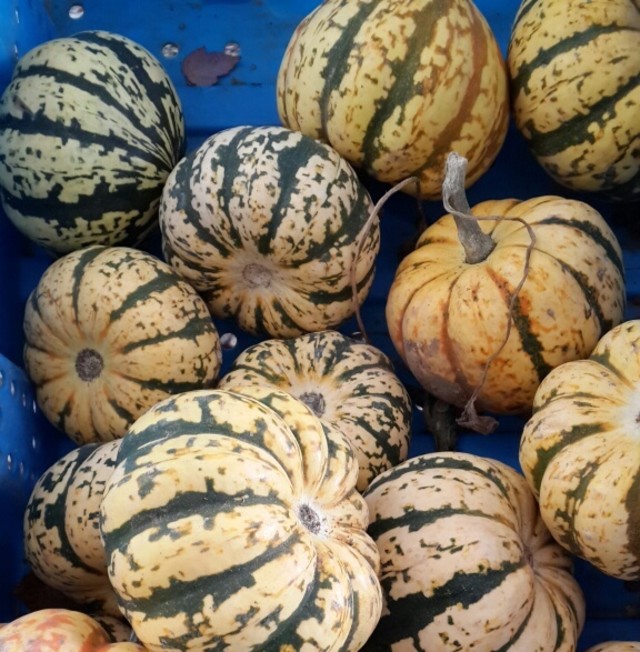
Heart of Gold: This fairly new variety is also a hybrid of the Sweet Dumpling and Acorn and resembles the Carnival squash. Bred to grow easily and resist diseases, the Heart of Gold has a distinct acorn-like shape and does not have stringy flesh or orange spots, which sets it apart from the Carnival.
How it looks: Cream colored outer skin with dark green striped mottling, golden colored flesh, large seed cavity
How it tastes: Sweet, fine-grained, thick texture, with a thin edible skin
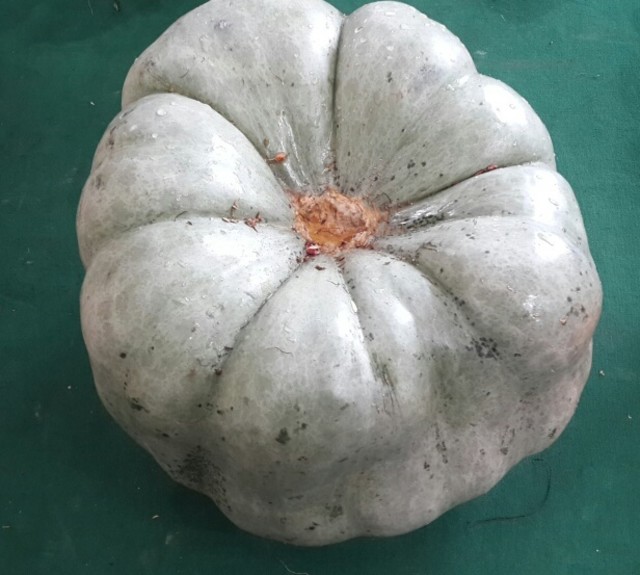
Jarrahdale: “The Jarrahdale looks like a cross between the Blue Hubbard and a Cinderella pumpkin,” Hertel says. This uncommon colored squash is named after a town in New Zealand and is also popular in Australia. The Jarrahdale has a long storage period as well.
How it looks: Flatter shape than other varieties with a smooth but ribbed surface. Unique blue-gray skin with golden-yellow stringless flesh
How it tastes: Moist, thick, sweet and somewhat fruity flavor.
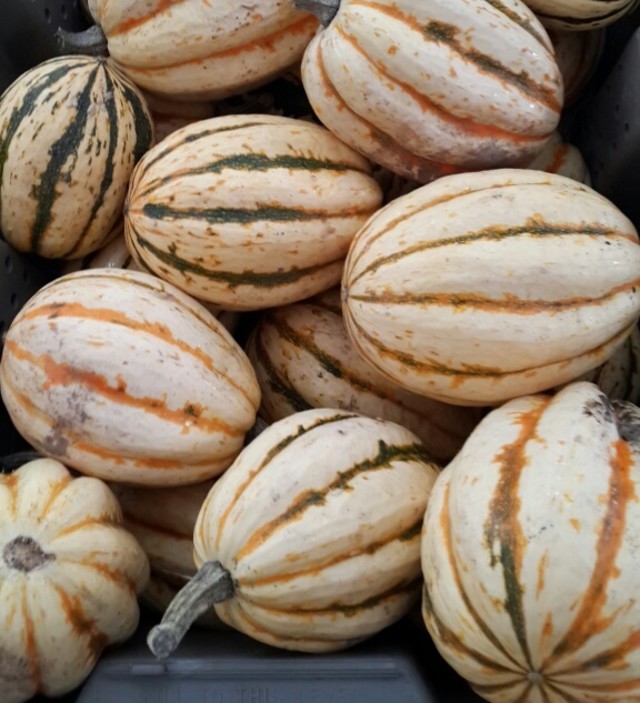
Jester: This variety hails from the Acorn family and is almost the same size as the Carnival squash. It is best eaten two months after harvesting (like the Delicata) and does not have a long storage period.
How it looks: Football shaped, scalloped ridges and tapered ends, pale yellow skin with green stripes
How it tastes: Sweet, creamy flesh with very thin edible skin
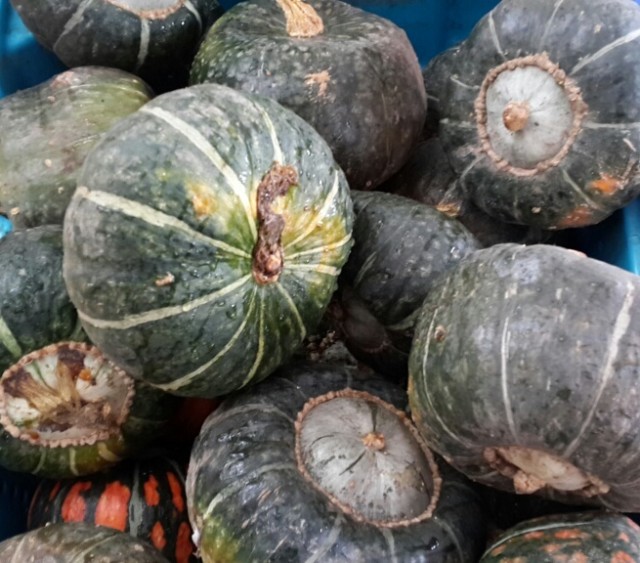
Kabocha: An Asian variety of winter squash, this classic is also known as the Japanese pumpkin. It is sweeter than butternut squash and stocked with beta-carotene and other nutrients, making it a popular seasonal choice for soups, baking, and even in curries.
How it looks: Round and squat. Hard, dark green shell but can be available in other colors such as orange and red, has mottled grey stripes and deep yellow flesh
How it tastes: Subtly sweet nuttiness similar to sweet potato, moist, dense and fine-grained texture
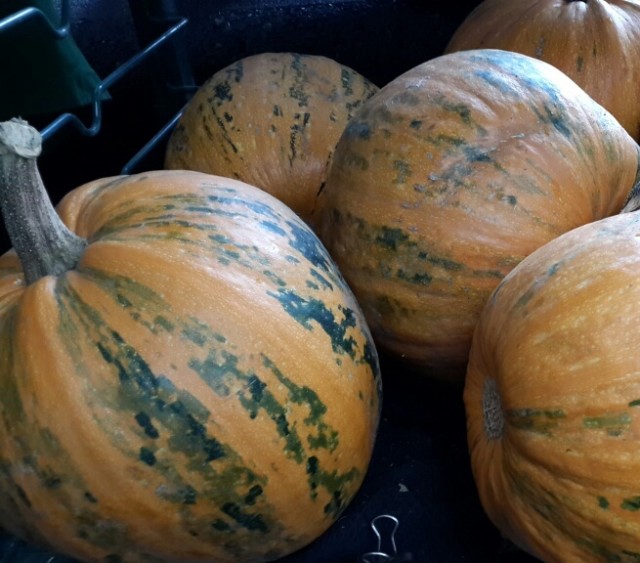
Kakai: Probably the only squash grown for its seeds, there are varieties of Kakai that come from different heirlooms such as the Austrian and the Japanese (smaller in size). “Its hull-less seeds can be roasted and are full of nutritional oil that contains proteins and fatty acids,” Hertel says. Toasted Kakai seeds also make popular snacks, and can be served raw as a crunchy topping on soups and salads.
How it looks: Medium-small in size, dark green and orange shell with light orange flesh, hulless, large, dark green seeds
How it tastes: The flesh does not have a flavorful or strong taste, but is edible. The seeds are creamy and sweet in flavor.
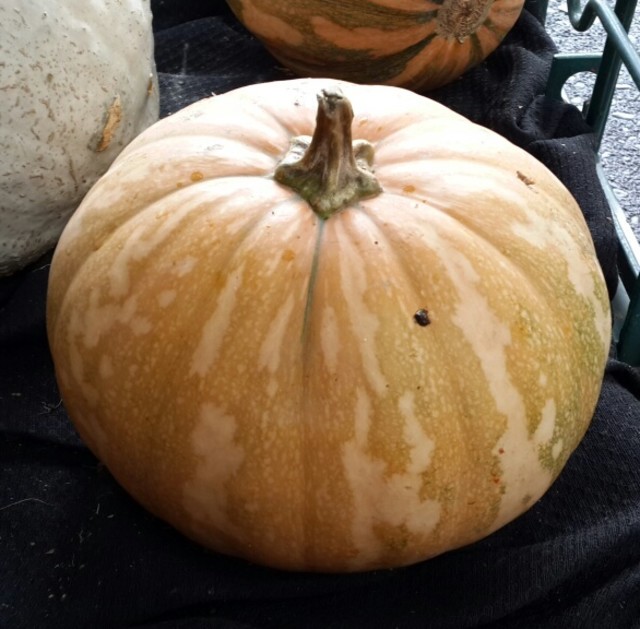
La Estrella: This variety was developed and bred by Don Maynard, a University of Florida researcher and professor, who wanted to breed a specialty tropical pumpkin that tasted better than it looks. La Estrella was bred from one of the many tropical calabaza hybrid squash that is native to Central America.
How it looks: Round in shape, waxy-looking, dull orange/tan skin with mottled gray-green stripes, smooth exterior.
How it tastes: Rich, nutty, full-flavored
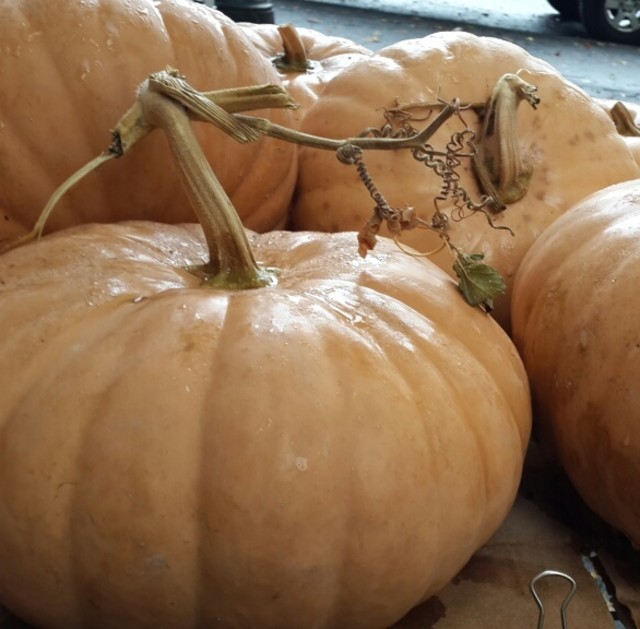
Long Island Cheese: As per its name, this Long Island native heirloom resembles an artisan cheese wheel and was a favorite in the 1800s to use in pies or for decorating. It is also known as Fairytale pumpkin and Tuscan pumpkin.
How it looks: Squat, scalloped shape. Pale, tan/beige smooth exterior with dark orange flesh
How it tastes: (Despite its name, it doesn’t taste at all like cheese.) Moderately sweet flavor
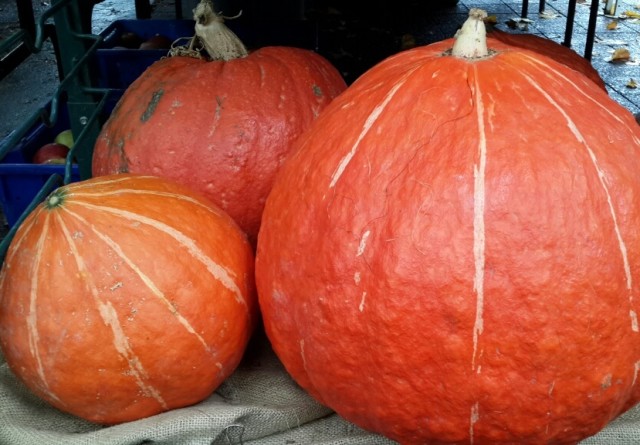
Red Warty Thing: Really. With its brilliant red bumpy skin and large, oblong shape, this squash looks like a cross between an overgrown gourd and a red Hubbard squash. It was introduced in 1897 as Victor and recently renamed as the Red Warty Thing (a far cry from its former name, don’t you think?)
How it looks: Very hard, thick shell, with golden-orange fine-grained flesh
How it tastes: Crisp and sweet, it also provides excellent flavor while eaten raw
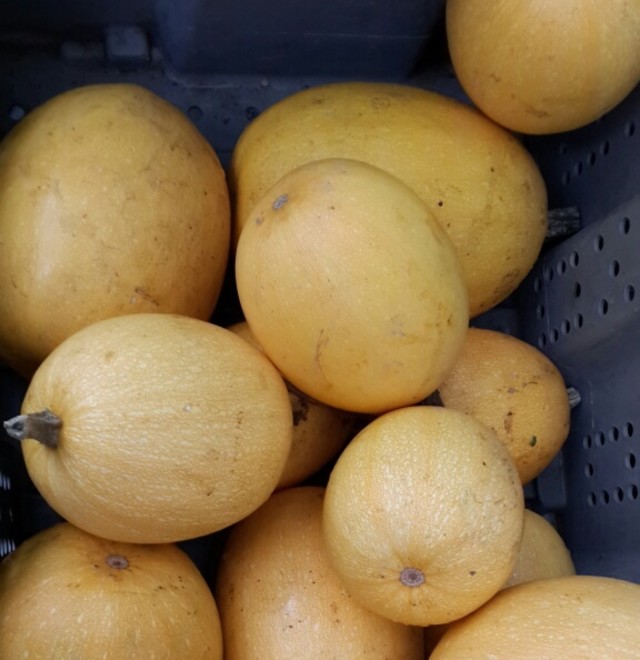
Small Wonder Spaghetti: “This is the perfect single serving spaghetti squash,” Hertel says. The Small Wonder is a hybrid to its larger sized cousin—Spaghetti squash—and works well as an alternative to gluten-free pasta.
How it looks: Light orange, oval shape with a bright yellow stringy, strand-like flesh. The exterior skin color doesn’t affect the ripeness or taste.
How it tastes: Savory, creamy, mildly buttery
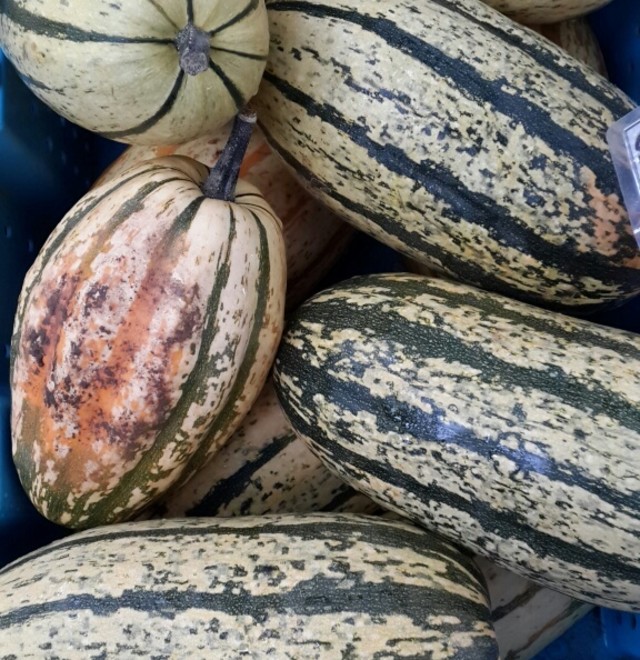
Stripetti Spaghetti: A hybrid cross between the Delicata and Spaghetti squash, the Stripetti also resembles a lengthier watermelon. The beige exterior becomes orange once it’s ripened.
How it looks: Large, oval shape with thick, green and beige skin, golden stringy flesh
How it tastes: Nutty, mild flavor like potato. When cooked, the sweetness resembles a sweet potato.
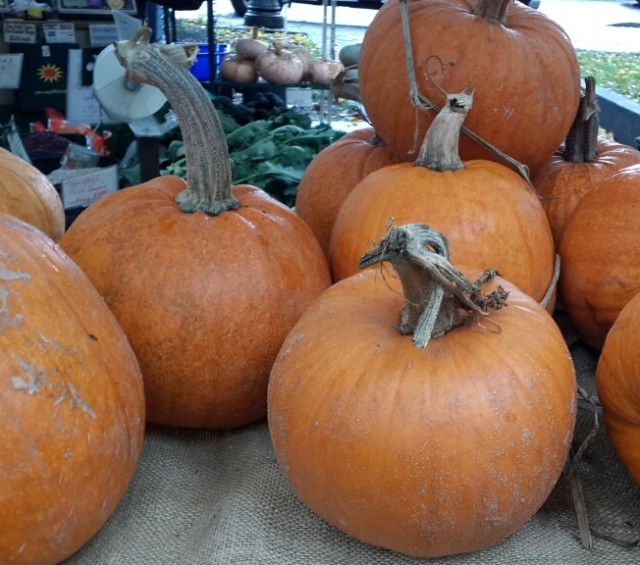
Sugar Pie Pumpkin: “Don’t take a carving pumpkin and make a pie out of it,” Hertel says. Wise words for all beginner pumpkin pie makers. Like its namesake, this variety is sweeter, dryer, and has more flesh than a carving pumpkin, making it the optimum choice for baking sweet treats.
How it looks: Dark orange, lightly ribbed shell with deep yellow, fine-grained flesh
How it tastes: Dry texture, sweet and strong pumpkin flavor

Sweet Dumpling: This fun-sized Acorn variety is only four to five inches in diameter, making it an ideal single-serving squash.
How it looks: Cream or yellow with green stripes on the exterior, pale yellow flesh and a deeply indented stem.
How it tastes: Mildly sweeter and dryer than other squash varieties, hints of chestnut flavor
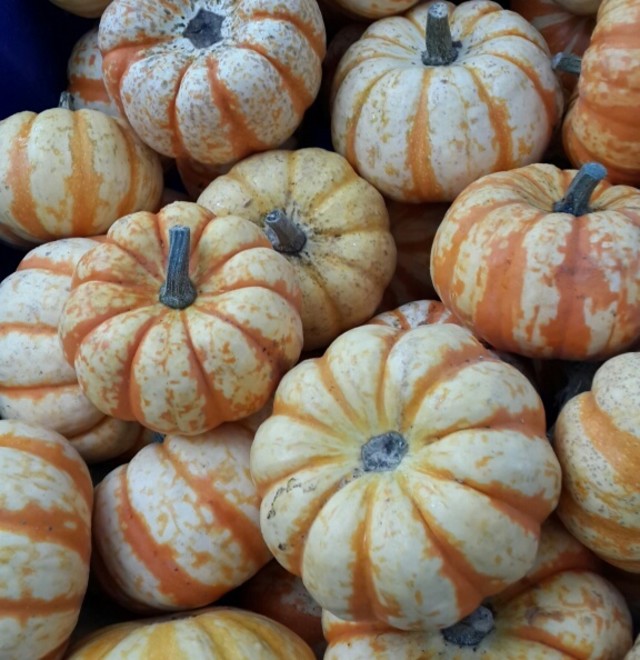
Sweet Lightning: “During Thanksgiving, people like to cut the top off, stuff it with brown sugar and oatmeal and bake it for dessert,” Hertel says. Its name is derived from its fast cooking time, and it is also widely used as decorative ornaments, thanks to its 3-by-5 inch size.
How it looks: Flat, acorn-shaped, mottled white exterior with yellow and orange markings
How it tastes: Smooth, creamy texture
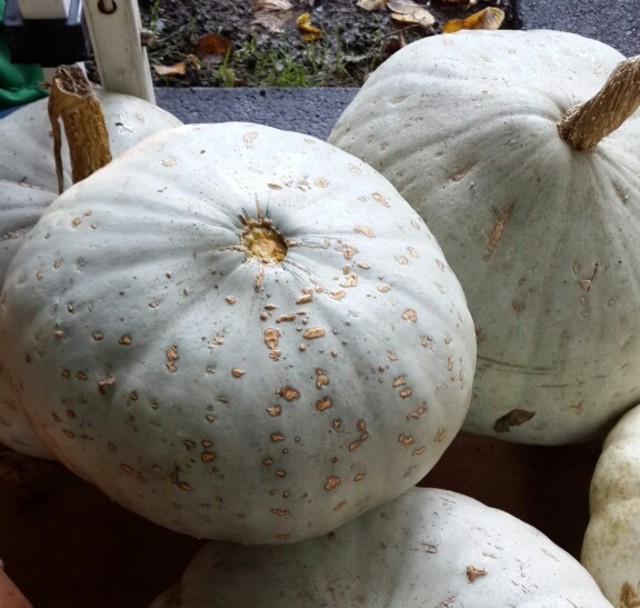
Sweet Meat: Well-known in the Pacific Northwest, the Sweet Meat is a favorite for baking desserts and can last up to six months in storage. Its shape is a lot like the Long Island Cheese and varies between 5 to 20lbs.
How it looks: Faint, bluish-grey to deep green exterior with thick orange flesh
How it tastes: Dense, non-stringy texture that is rich and buttery
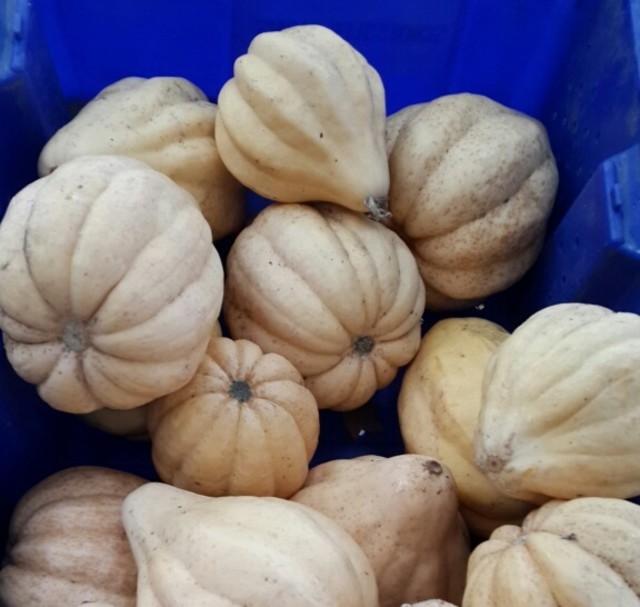
Thelma Sanders: “Whoever Thelma was, she was an amazing lady!” Hertel says. “The texture of this variety is a lot like sweet potato squash. You can cut it up into wedges and make great sweet potato fries out of it.” This Missouri heirloom turns lightly golden when ripe and is actually grown in the summer, but its ripening period takes longer than other varieties.
How it looks: Light yellow, creamy exterior with orange-gold flesh
How it tastes: Buttery soft texture, sweet chestnut notes
*The best way to store winter squash? In a cool and dry place away from light. Squash varieties with thicker exterior shells can last for three to four months.


